 While I was consumed with trying to deal with Phidget problems on SR3, I was also working with Dave Aufderheide, the developer of Race Coordinator (RC), to support power-cycling when out of fuel.
While I was consumed with trying to deal with Phidget problems on SR3, I was also working with Dave Aufderheide, the developer of Race Coordinator (RC), to support power-cycling when out of fuel.
RC always supported fuel racing but it just quit counting laps when you ran out of fuel. It has audio to inform you you’re low or out of fuel but it did not “stutter” power to make it painfully obvious you were out of fuel.
In the midst of working with SlotTrak to resolve the SR3 pit-entry detection issues, I also reapproached Dave at RC to support the power “stuttering” feature exclusive to SlotTrak fame. If RC could support that feature, it would certainly make RC a comparable alternative to SlotTrak, which appeared to have serious issues with fuel racing on SR3 at the time.
Dave is a remarkable and clever guy and one who seems to enjoy solving complex technical problems…if he has the time among being a husband, father, and very busy professional software developer. I first approached Dave on this feature several years ago but he felt that I was the only one out there requesting it and didn’t give it too much thought back then.
A few years–and a little spare time–later, he came up with a possible way to do it. RC has a mechanism called “Extended Protocol” that allows technical track owners to add custom features to RC largely independent of the actual RMS system. These features actually run on a Arduino microcontroller in a software environment called a “Sketch.” This is a C++-based programming environment that allows you to write code that interacts with RC to accomplish some purpose like controlling LED’s, lights, lane switching, audio, whatever you can think of that RC may not do but the independent Sketch can.
In this case, Dave determined that the Arduino Sketch could actually “stutter” or cycle individual lane relay power independently without having to change the code in RC. This, of course, is very desirable to a developer since he doesn’t have to change the main program and then support the new features into perpetuity.
So, after just a couple of weeks of finding time to test and write code, and retest, Dave came up with a Sketch that does the job quite nicely. All you have to do is “tweak” the Sketch code to communicate with your track hardware, configure the “stuttering” pattern, upload it to the Arduino, and bingo! When a car runs out of fuel, the relay simulates an out-of-fuel situation just like SlotTrak.
“So what,” you say? Well, there are only two systems out there that support this feature: SlotTrak and now Race Coordinator. I’m very pleased and glad I have an alternative to SlotTrak in this regard.
We haven’t used RC much over the last couple of years for serious racing. Mainly because SlotTrak’s fuel features had the “stuttering” capability and most drivers prefer that over the–not always reliable–audio alert when running out of fuel. Now we have two options. Both systems have their strong points, different features, functions, etc. RC is a very customizable RMS, whereas SlotTrak is pretty much a closed system with relatively little customization possible by the user.
I love them both. But I sure wish they both supported the same hardware, which is frustrating, but they are exceptional RMS solutions that have unique features which make it difficult to always run one over the other.
Okay, shut up and drive!
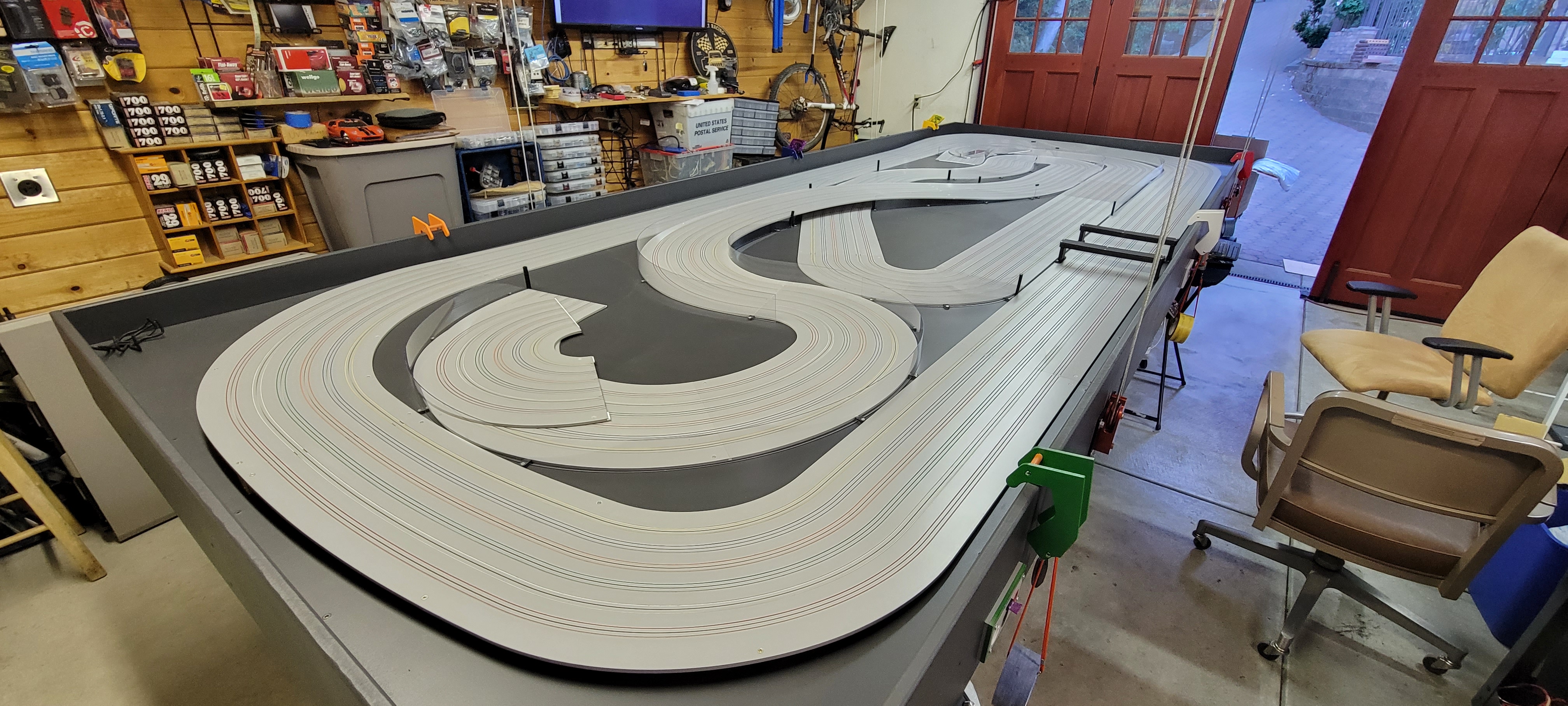 The oval layout is operational and ready for Saturday’s test session.
The oval layout is operational and ready for Saturday’s test session.![]() I ran a few magnet and gravity cars and it feels pretty fluid and fast. It’s not as fluid around the banks as I expected but it’s a lot better than SR2 in that regard.
I ran a few magnet and gravity cars and it feels pretty fluid and fast. It’s not as fluid around the banks as I expected but it’s a lot better than SR2 in that regard.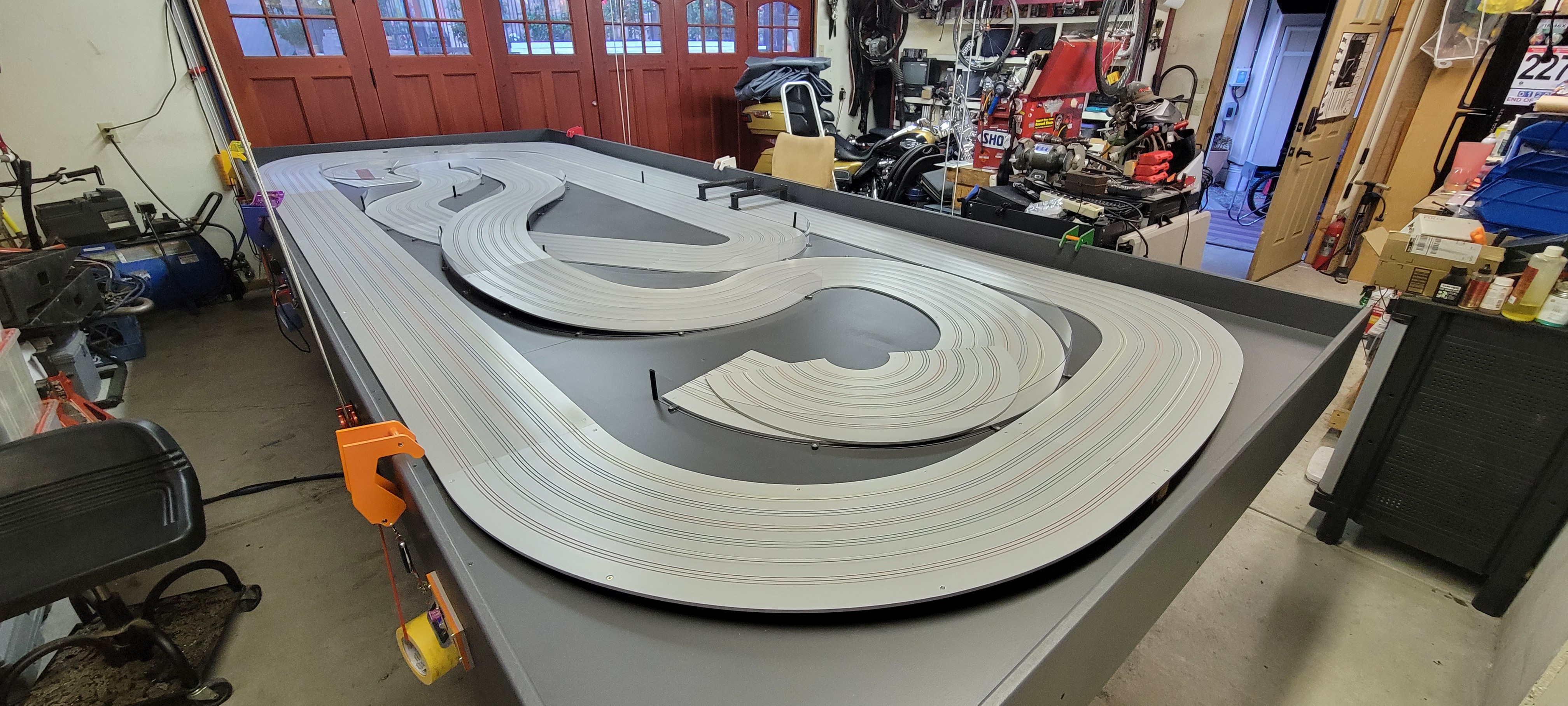 The cars still straighten out between the banked corners but not as pronounced as SR2. Turns 1 & 4 are sharper than 2 & 3, which makes this oval more challenging than the SR2 oval layout. Some of you have experienced the last corner before the start/finish line, it’s tight and alluring, with a decreasing radius entry that makes getting to the finish line a bit more difficult than SR2.
The cars still straighten out between the banked corners but not as pronounced as SR2. Turns 1 & 4 are sharper than 2 & 3, which makes this oval more challenging than the SR2 oval layout. Some of you have experienced the last corner before the start/finish line, it’s tight and alluring, with a decreasing radius entry that makes getting to the finish line a bit more difficult than SR2.
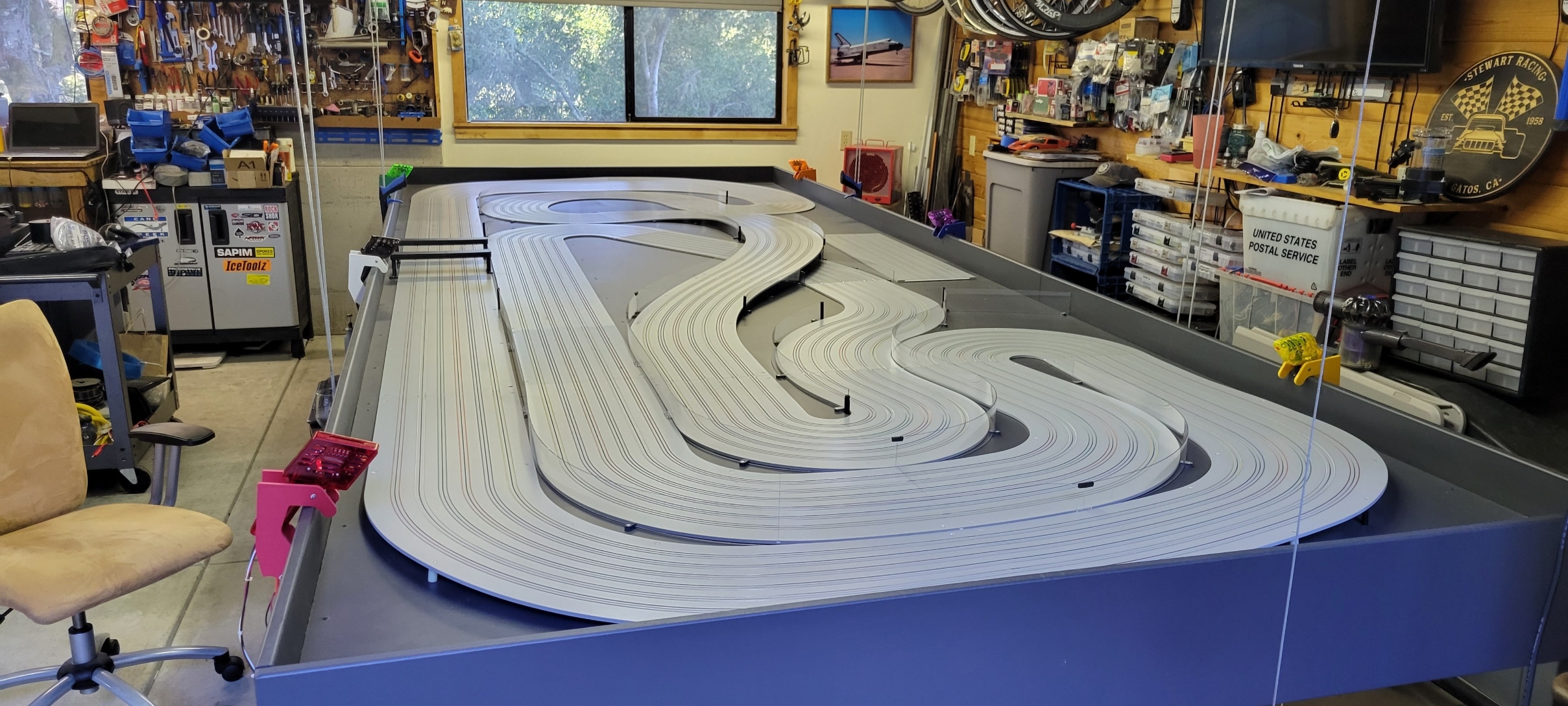
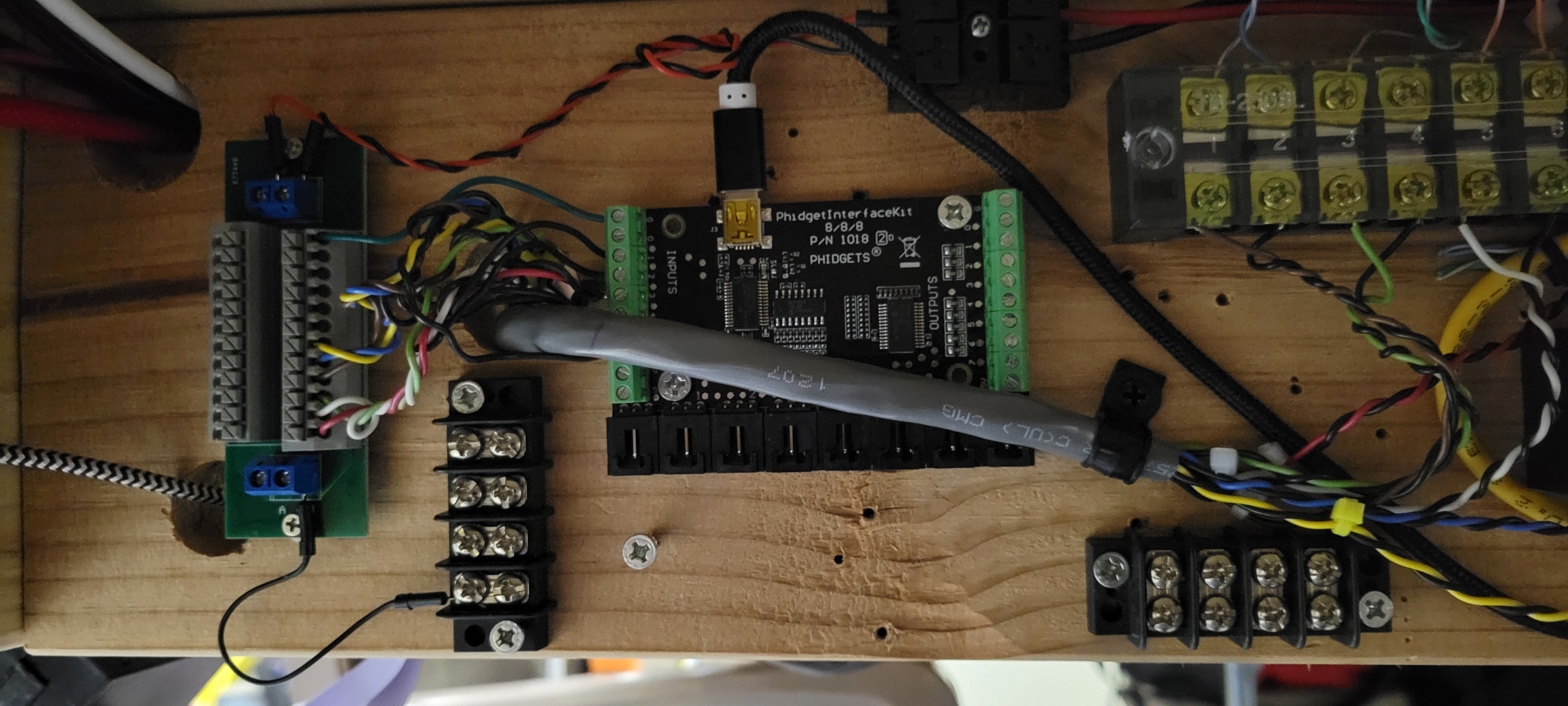
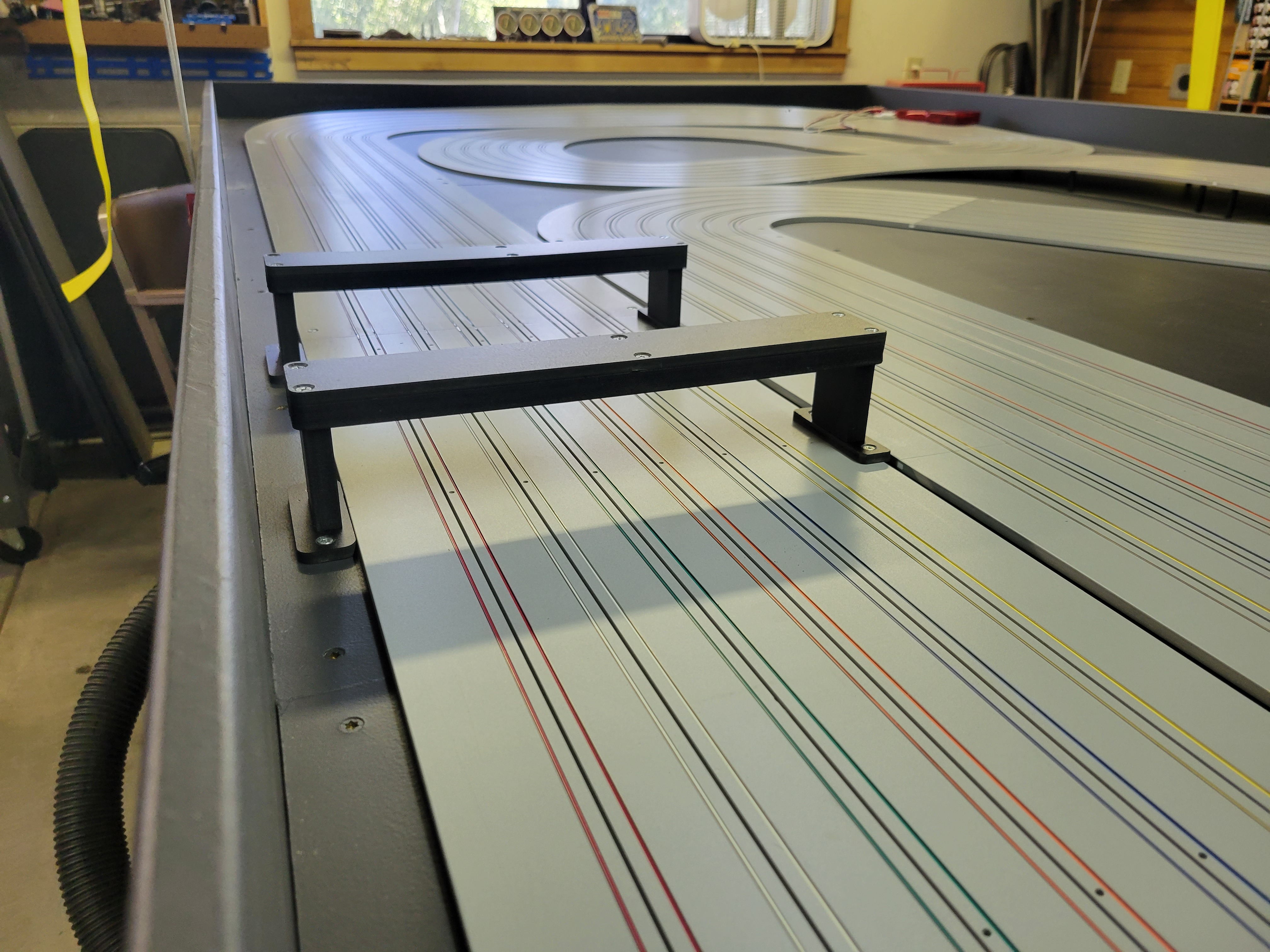 Stewart Raceway is back in business. I’d like to get at least six drivers over for a track day either Saturday, May 14, 2022 or Saturday, May 21, 2022.
Stewart Raceway is back in business. I’d like to get at least six drivers over for a track day either Saturday, May 14, 2022 or Saturday, May 21, 2022. While I was consumed with trying to deal with Phidget problems on SR3, I was also working with Dave Aufderheide, the developer of Race Coordinator (RC), to support power-cycling when out of fuel.
While I was consumed with trying to deal with Phidget problems on SR3, I was also working with Dave Aufderheide, the developer of Race Coordinator (RC), to support power-cycling when out of fuel.